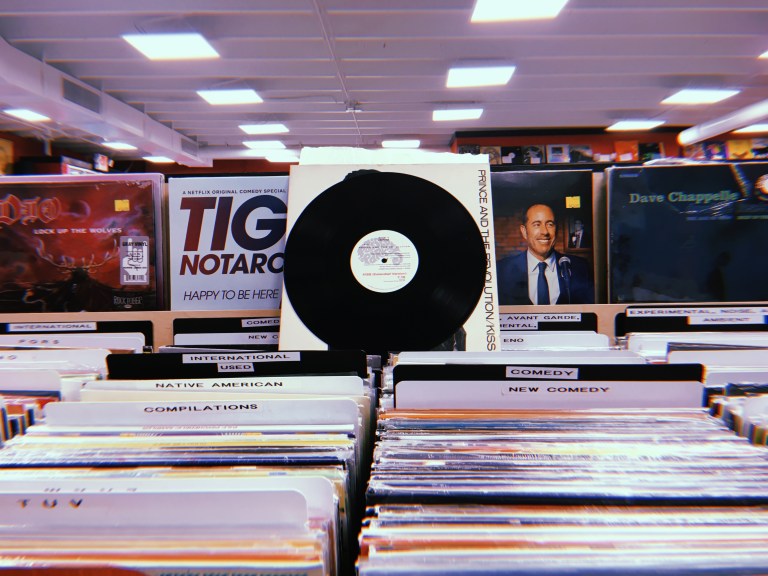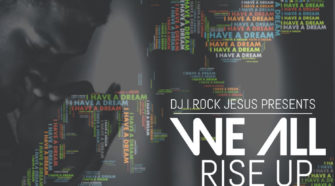Here’s the “spin” on vinyl.
Andrew Puckett offers his thoughts on the resurgence of vinyl albums.

Over the past few years, vinyl record sales have been rising, as has the presence of a ‘vinyl cult’ in popular culture. College students are participating in the craze by purchasing, playing and collecting vinyl pressings of all their favorite music.
Surveying the pop-culture scene today, it is easy to see a return of ‘vintage’ themes. Many critics and sources will attribute the comeback of vinyl pressings to nostalgia, but what more is there to the sudden rise in production of vinyl records? From a social standpoint, fashion, art, music and language are driving factors in determining what is viewed and accepted as trendy. On the business side, vinyl records preserve a higher quality sound, with more return value than digital streams.
Culturally speaking, youth of today are spinning a taste for the past, wearing and experimenting with time specific clothes and practices from the second half of the 1900s. Fashion has rebounded from the ‘80s and ‘90s, bringing with it an artistic appreciation for other iconic pieces of history. The explosion of popular music in the late ‘70s and ‘80s meant there would most certainly be a mass production of records and record players. When the age of the CD came around, vinyls quickly turned obsolete for all but the die-hard music enthusiasts and collectors. With the passing of years, these “artifacts” have been stockpiled by collectors, pawn shops and record stores, allowing a new market to develop, specifically within the millennial generation.
Over time, vinyl pressings will lose their playback quality, while CDs playback quality will stay the same. To understand the return value of vinyls, one would have to know how the actual recordings were processed. There are two ways to record and store audio: digital and analog. Digital recordings are as their name implies; a sound pressure wave is converted to an electronic signal, then stored as data, structured in a certain bit-rate. Analog recordings take a sound pressure wave and convert it into an electronic signal stored on a magnetized tape. This tape recording has no conversion process, which results in no loss of warmth or depth in sound. For example, the highest digital bit-rate is 32 bit float, which is significantly lower than analog, shown in the diagram below.

In an age of fast paced, streaming based music content, the heart and soul of what a song or an album was made to be can easily be lost. Growing up, my music collection was three large cases of CD’s, even a plethora of tapes. When I was 9 years old, I bought my first iPod (shuffle, 2nd Gen), which completely changed the way I listened to and digested music. Between instant access to downloads and constant access to headphones, my music taste grew exponentially, but my appreciation for the content dropped dramatically. In the span of a week, I could listen to three new albums without retaining much of the message, teaching me to devour music like candy on Halloween night.
By the time I was 17, the music world had begun to shape into an ever fluid, evolving scheme of streaming stats, oversaturated with upcoming musicians releasing copious amounts of content, just to satisfy listeners like me. Fast-forward two more years and the music industry has made yet another shift. With streaming sources like Spotify and Apple Music dominating content curation, the music quality being released has dropped, while the quantity has risen. Now that streams per song/album can count as sales, topping charts and getting radio play has become a never ending game of streaming and marketing to reach a broad dispensable audience. In effect, a “pay-to-play” industry has grown up right in front of me.
In the midst of this, however, a small group of rabble-rousers decided they had been bombarded by the industrialization of music for too long. In silence, vinyl record sales began to rise. Call it sheer luck and happen-stance, or a necessary change, a culture began to develop, based around nostalgic art and vintage vibes. Call them appreciators of the past, or young minds slowing the speed to take the music in, there is no stopping them or record sales from growing.
________
— Guest Contributor, Andrew Puckett
Andrew Puckett is a music artist and creative based out of Charlotte, NC. Puckett’s new album, Retrospect, was just released and can be found here: https://fanlink.to/
3,025 total views, 0 views today














